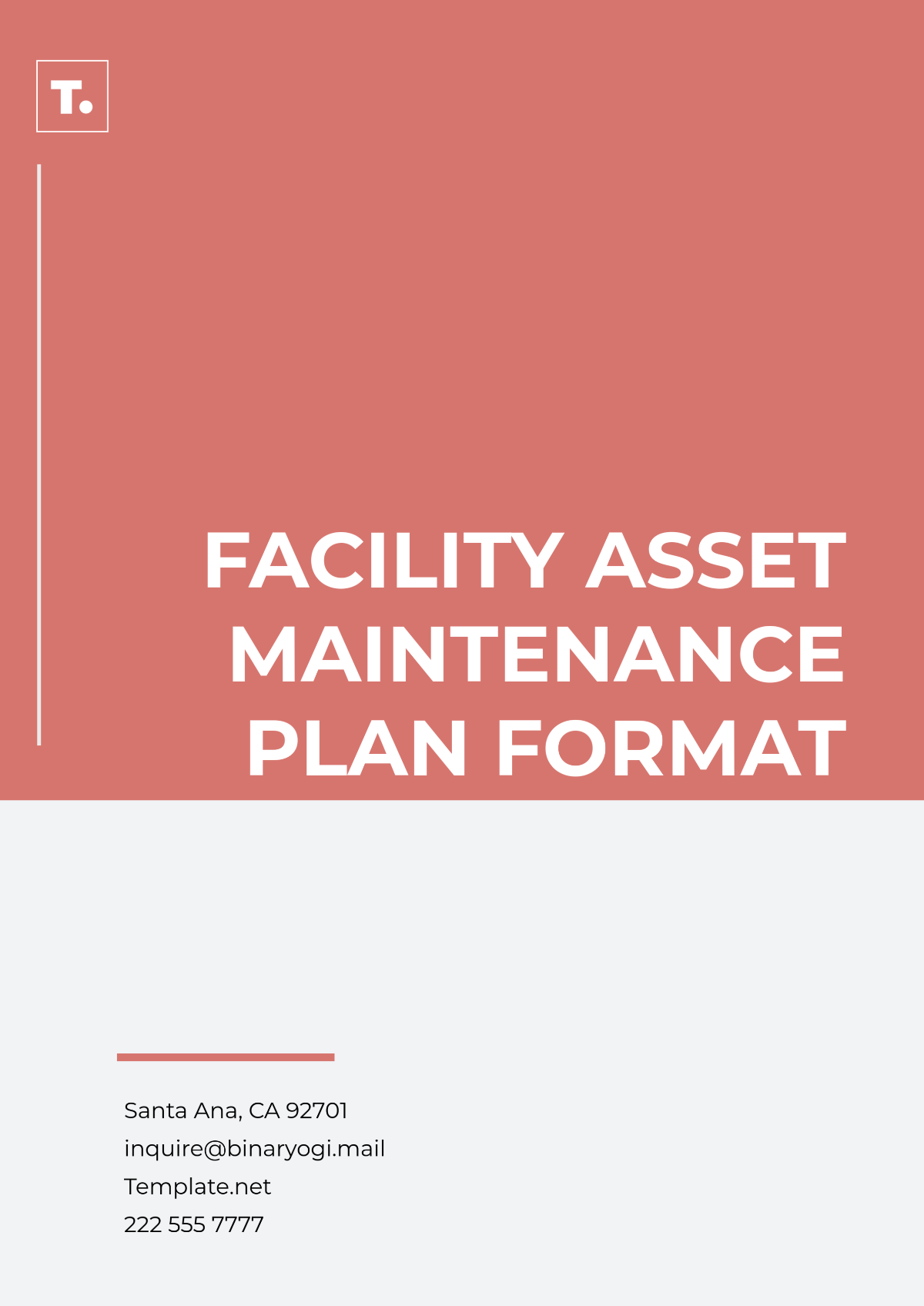Multi-Asset Maintenance Plan
Prepared by: [Your Name]
Company: [Your Company Name]
Date: [Date]
I. Asset Inventory
A. Asset List
This section details all assets included in the plan, categorized by type and location.
Asset Type | Asset Name | Location | Quantity |
|---|---|---|---|
Machinery | Industrial Pumps | Facility A | 10 |
Vehicles | Delivery Trucks | Logistics Center | 25 |
Infrastructure | HVAC Systems | Office Buildings | 15 |
Equipment | Safety Gear (PPE) | Warehouses | 500 sets |
B. Asset Identification
Asset Tags: Each asset is assigned a unique identifier for easy tracking (e.g., ID-MACH-001, VEH-DEL-012).
Asset Details: Description includes model number, serial number, manufacturer, and date of acquisition.
Location Mapping: Assets are mapped to specific departments and facilities to simplify maintenance tracking.
II. Maintenance Schedule
A. Routine Maintenance Schedule
A detailed timeline of planned maintenance activities for different asset categories from 2050 to 2055:
Maintenance Task | Asset Type | Frequency | Scheduled Dates |
|---|---|---|---|
Lubrication | Industrial Pumps | Monthly | First Monday of Each Month |
Safety Inspection | Delivery Trucks | Quarterly | January, April, July, October |
Air Filter Replacement | HVAC Systems | Biannually | March, September |
B. Preventive Maintenance Intervals
Preventive maintenance tasks are scheduled based on asset usage and manufacturer recommendations:
Industrial Pumps: Inspection and calibration every 6 months.
Delivery Trucks: Oil change and tire rotation every 10,000 miles.
HVAC Systems: Full system check every year before summer.
III. Maintenance Procedures
A. Standard Operating Procedures (SOP)
Detailed instructions for performing routine maintenance activities:
Industrial Pumps:
Shut down the pump and disconnect the power source.
Inspect for any visible leaks or damage.
Lubricate bearings using manufacturer-recommended oil.
Record maintenance activity in the asset logbook.
Delivery Trucks:
Check engine oil levels and top up if necessary.
Inspect tires for wear and ensure proper inflation.
Test brake functionality and replace brake pads if needed.
B. Emergency Procedures
In case of unexpected asset failure:
Emergency Contact: Call the designated emergency repair team at 1-800-ASSET-HELP.
Action Plan: Isolate the faulty asset to prevent further damage and notify the maintenance manager.
Documentation: Log the issue in the system immediately for follow-up action.
IV. Responsibility Matrix
A. Roles and Responsibilities
Key personnel and their assigned tasks:
Role | Responsibility | Contact Information |
|---|---|---|
Maintenance Manager | Oversees all maintenance activities | Maryjane Dare, Ext. 101 |
Lead Technician | Performs complex repairs and diagnostics | Cyrus Ortiz, Ext. 102 |
Facility Supervisor | Coordinates with maintenance teams | Talia Jacobs, Ext. 103 |
B. Communication Plan
Reporting Protocol: Maintenance issues must be reported via the Asset Management Portal.
Escalation Process: Critical problems are escalated to the Maintenance Manager immediately.
V. Risk Assessment
A. Risk Identification
Potential risks and associated assets:
Risk Type | Asset Affected | Probability | Impact Level |
|---|---|---|---|
Mechanical Failure | Industrial Pumps | High | Severe |
Accidents | Delivery Trucks | Medium | Moderate |
HVAC Malfunction | HVAC Systems | Low | High |
B. Mitigation Strategies
Routine Inspections: Increase the frequency of inspections for high-risk assets.
Training Programs: Provide specialized training for maintenance staff to handle emergencies effectively.
Contingency Planning: Develop backup plans for essential equipment failures to minimize operational disruptions.
VI. Budget Allocation
A. Maintenance Costs
Estimated annual maintenance costs for 2050-2055:
Expense Type | Annual Budget ($) |
|---|---|
Labor Costs | 500,000 |
Parts and Materials | 300,000 |
External Services | 150,000 |
Contingency Fund | 100,000 |
Total | 1,050,000 |
B. Resource Allocation
Prioritization of budget based on asset criticality:
High-Critical Assets: 60% of the budget (e.g., industrial pumps, HVAC systems).
Moderate-Critical Assets: 30% of the budget (e.g., vehicles, safety gear).
Low-Critical Assets: 10% of the budget (e.g., non-essential equipment).
VII. Performance Metrics
A. Key Performance Indicators (KPIs)
Metrics used to evaluate the effectiveness of the maintenance plan:
KPI | Target Value | Actual Value (2051) |
|---|---|---|
Asset Uptime Percentage | 98% | 96.5% |
Mean Time Between Failures | 1,000 hours | 900 hours |
Mean Time to Repair | 2 hours | 1.8 hours |
B. Continuous Improvement
Strategies for enhancing maintenance performance:
Data Review: Regular analysis of maintenance data to identify areas of improvement.
Feedback Loop: Encourage feedback from maintenance staff to refine procedures.
Plan Updates: The maintenance plan will be reviewed every six months and updated based on performance data and feedback.















